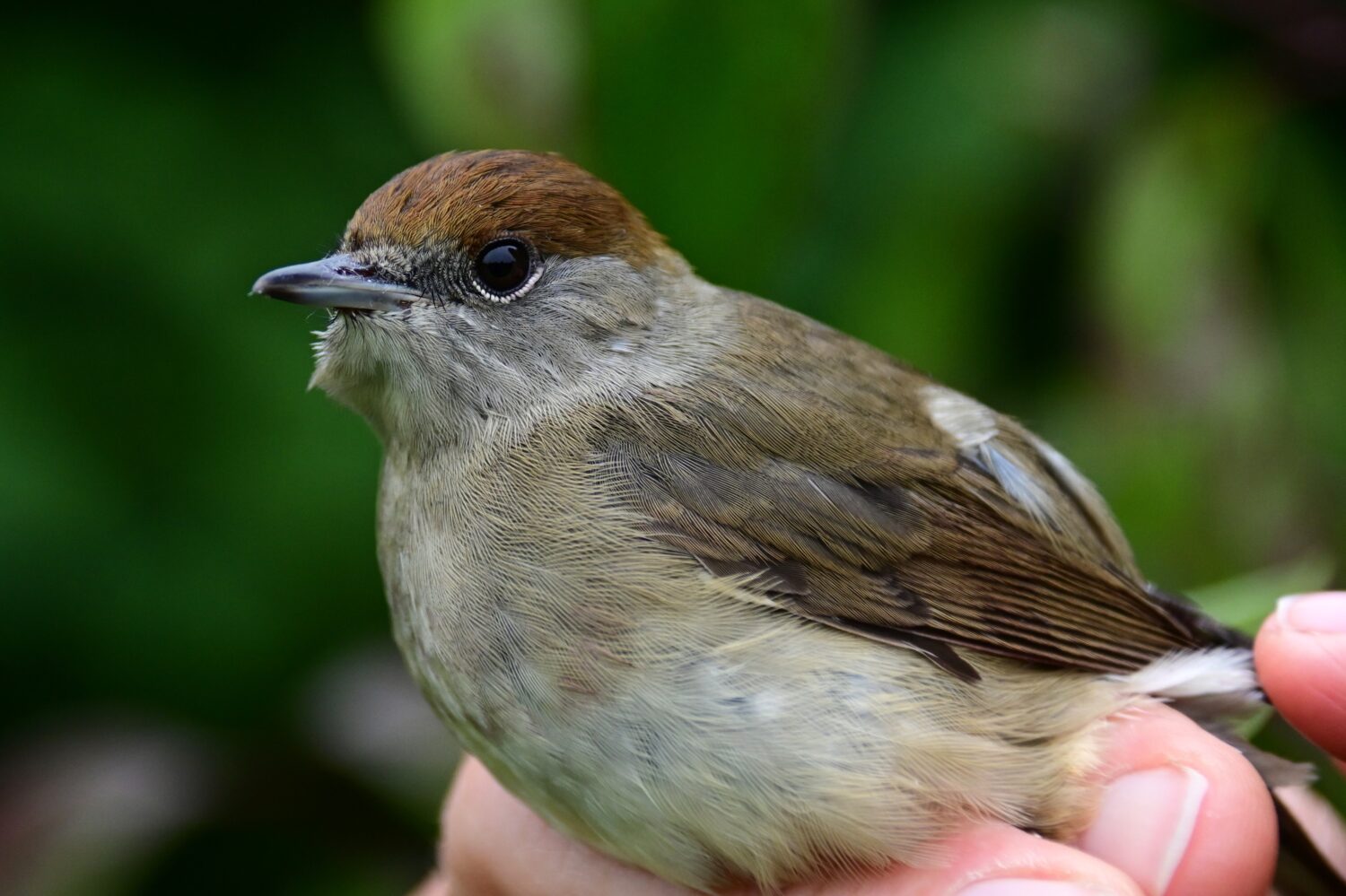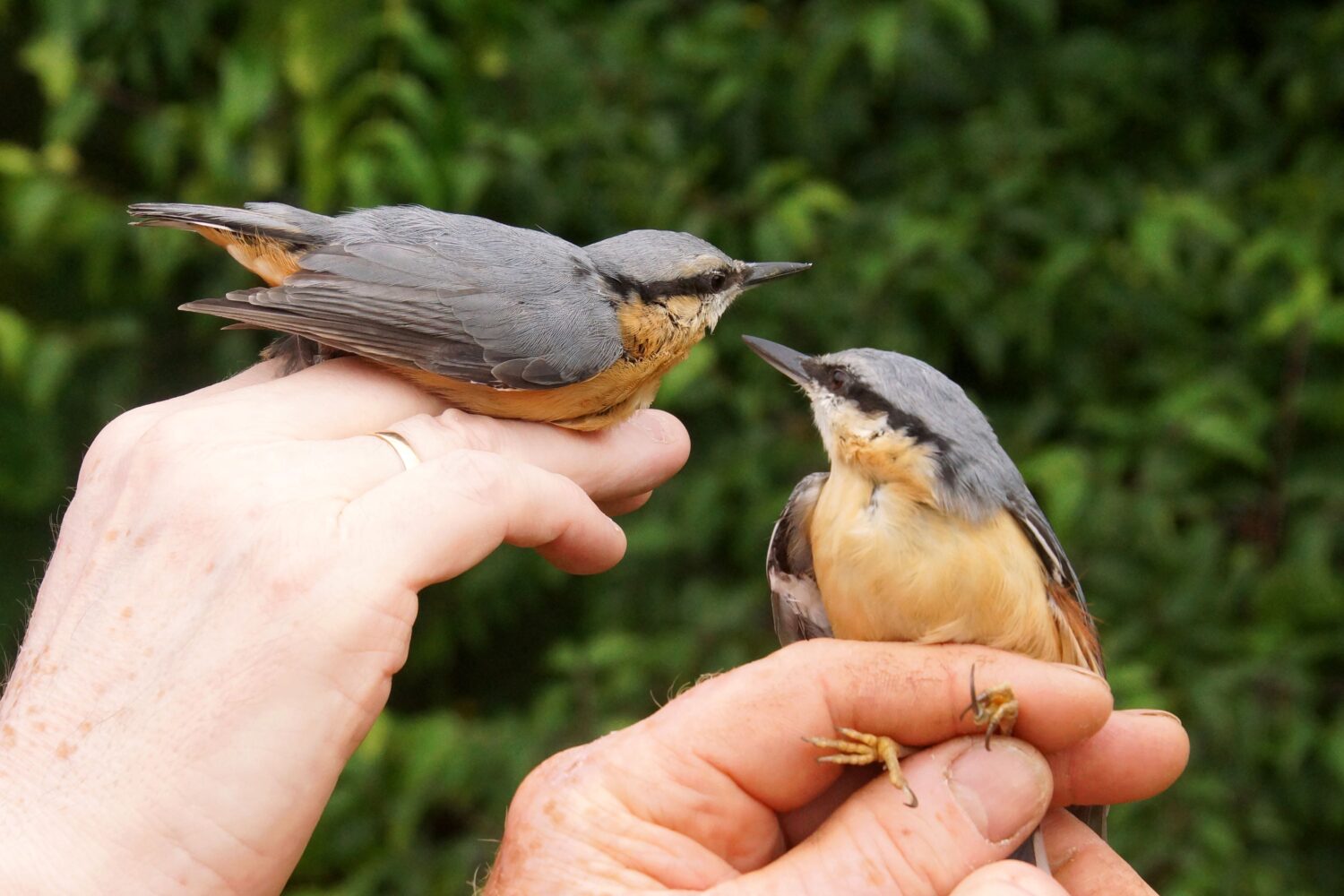North East ornithologist, Phil Hanmer, shares a new update summarising bird ringing across Northumberland throughout September.
Returns from the British Trust for Ornithology (BTO) this month confirmed the age of some of this year’s (very few) nesting Barn Owls. One successful pair (at Netherwitton) were in their box from March and were always present on the three times we visited; successfully raising one owlet. The female was ringed near Heighley Gate, Morpeth in 2014 in her nest and so is now 7 years old; while the male was ringed in the National Park in the upper Breamish Valley in 2017 as an adult. Hence, he must be 5 years old but could be older. Another entirely new pair took over a traditional site near Wooler and raised two young. Here the male was only a year old, having been ringed near Wooler in his own nest only the year before. The female had not been encountered previously but did look to be two years old.
Finally, what is probably my currently oldest known owl was encountered nesting near Boulmer in June. She had been pushed out of her usual site by some noisy Kestrels but found another box a short distance away from where she raised four young. Her ring number tells us she was ringed near Lesbury in 2011; hence she is now ten years old! I will report properly on this year’s Barn Owl monitoring next month when I have got all the computerised data off to the BTO.

The weather relented enough for us to be able to ring at Howick on the 3 September and it proved to be quite a busy morning with 64 birds captured (44 new and 20 retraps). It was very much a day for Blackcaps with 17 being ringed; every single one was a juvenile in the process of feeding up on berries prior to their first migration south to the Mediterranean and North Africa. There was also a single adult Willow Warbler (a bit of a rarity this year) which at a glance did look very much like the five Chiffchaffs we also captured.
We were next able to ring on the 10 September when we captured 39 birds (26 new and 13 retraps). Two of the retraps had originally been ringed back in 2017; a noisy adult Great Spotted Woodpecker and a Blue Tit. The new birds included two Mistle Thrush which were probably local birds rather than early incoming migrants; simply on the search for berries in the Arboretum. There were also a few Blackcaps – the others probably having migrated further south – and a Chiffchaff. An obvious pair of adult Nuthatch were also captured. The female had a short wing of 83mm, while the male was 88mm; and rather easier to see – the undertail coverts of the male were russet while those of the female were much paler.

Back again on 11 September we captured 37 birds (28 new and 9 retraps) and we felt incoming migration had really started with the capture of 5 Song Thrush and 2 Mistle at the same time; all with few or no fat reserves. There were also 4 Blackcap, 3 Chiffchaff and a Whitethroat; all probably having come from further north and having paused their migrations long enough to feed up on local berries and insects. We finished early as the wind got stronger. We did an extra session on the 16th as a Ringing Demonstration for Newcastle University Biology Students and captured 52 birds (41 new and 11 retraps). Almost the first out of a net was a young Magpie followed by three Mistle Thrushes. There was also a new influx of Blackcaps (8) and Chiffchaffs (3) along with the expected assortment of local tits and finches. The 17th was a quieter session with only 28 birds captured (15 new and 13 retraps). These included 3 new Blackcaps and 2 new Chiffchaffs; the most attractive was probably the adult (ringed in 2019) Long Tailed Tit.
18 September started damp and overcast and eventually turned humid; we captured 47 birds (23 new and 24 retraps) and a Raven called in the mist above the Cricket-field while we were still setting up. There were a lot of migrating Chiffchaffs around the site, and we captured 8 of them; including two female adults both moulting and still feathering over their brood patches from raising late broods. 25 September was another busy session with 45 birds captured (38 new and 7 retraps) and two potential trainees ringing their first birds. We captured four Blackbirds and three Song Thrush with no fat reserves; which were very likely in-coming migrants (three of them had very dark bills which also tends to indicate a continental origin). There were also 8 new Chaffinches, an unusually high number; so probably also in-comers. Finally, there was a rare adult Goldcrest and a single Chiffchaff.
There were no Blackcaps on the site but later in the afternoon Alison and I observed eight feeding on Cornus sanguinea berries in a tree near the church; they were accompanied by a single (local) Robin that seemed determined to eat as many berries as possible before these interlopers scoffed the lot
Back on 15 September of the month my newest C Ringer had also done some ringing near Longhorsley and recaptured some of my favourite birds. We had seen both of these actual individuals before, in the late winter. These were an adult Willow Tit (the bottom bird in the picture below) and an adult Marsh Tit (top in the picture). Some birders will insist they can always tell them apart at a glance – but unless you hear them sing or have them in the hand it is very difficult (see photo.). At the same session, we also captured a funny looking bird that defied immediate identification; this was in fact a juvenile Yellowhammer. This will undoubtedly soon join up with others of its kind to form a winter flock. When we get to November ringing will by necessity quiet down due mostly to the vagaries of the weather but we will be making, repairing; and putting up new bird boxes for a variety of species including owls. Ideas for good sites are always welcome as are donations.
